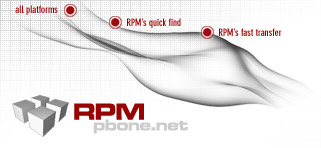| Name : tinydnssec
| |
| Version : 1.05
| Vendor : obs://build_opensuse_org/home:mbhangui
|
| Release : 24.1
| Date : 2018-10-06 05:54:53
|
| Group : System Environment/Base
| Source RPM : tinydnssec-1.05-24.1.src.rpm
|
| Size : 2.06 MB
| |
| Packager : Manvendra Bhangui < manvendra_indimail_org>
| |
| Summary : DNS suite
|
Description :
A collection of Domain Name System tools
This package includes software for all the fundamental DNS operations:
DNS cache: finding addresses of Internet hosts. When a browser wants to
contact www.yahoo.com, it first asks a DNS cache, such as djbdns\'s
dnscache, to find the IP address of www.yahoo.com. Internet service
providers run dnscache to find IP addresses requested by their customers.
If you\'re running a home computer or a workstation, you can run your own
dnscache to speed up your web browsing.
DNS server: publishing addresses of Internet hosts. The IP address of
www.yahoo.com is published by Yahoo\'s DNS servers. djbdns includes
a general-purpose DNS server, tinydns; network administrators run tinydns
to publish the IP addresses of their computers. djbdns also includes
special-purpose servers for publishing DNS walls and RBLs.
DNS client: talking to a DNS cache. djbdns includes a DNS client C
library and several command-line DNS client utilities. Programmers use
these tools to send requests to DNS caches.
djbdns also includes several DNS debugging tools, notably dnstrace, which
administrators use to diagnose misconfigured remote servers.
See http://cr.yp.to/djbdns.html
DQ: A package with DNS/DNSCurve related software.
It contains a recursive DNS server with DNSCurve support called
dqcache and also a commandline tool to debug DNS/DNScurve called dq.
See https://mojzis.com/software/dq/
CurveDNS: CurveDNS is the first publicly released forwarding implementation
that implements the DNSCurve protocol. DNSCurve uses high-speed
high-security elliptic-curve cryptography to drastically improve every
dimension of DNS security.
See http://dnscurve.org/ for protocol details.
curvedns allows any authoritative DNS name server to act as a DNSCurve
capable one, without changing anything on your current DNS environment.
The only thing a DNS data manager (that is probably you) has to do is
to install CurveDNS on a machine, generate a keypair, and update NS
type records that were pointing towards your authoritative name server
and let them point to this machine running CurveDNS. Indeed, it is that
easy to become fully protected against almost any of the currently known
DNS flaws, such as active and passive cache poisoning.
CurveDNS supports:
* Forwarding of regular (non-protected) DNS packets;
* Unboxing of DNSCurve queries and forwarding the regular DNS packets
* Boxing of regular DNS responses to DNSCurve responses;
* Both DNSCurve\'s streamlined- and TXT-format;
* Caching of shared secrets;
* Both UDP and TCP;
* Both IPv4 and IPv6.
See http://curvedns.on2it.net/
|
RPM found in directory: /packages/linux-pbone/ftp5.gwdg.de/pub/opensuse/repositories/home:/mbhangui/Fedora_27/x86_64 |
Hmm ... It's impossible ;-) This RPM doesn't exist on any FTP server
Provides :
config(tinydnssec)
tinydnssec
tinydnssec(x86-64)
user(Gdnscache)>999
user(Gtinydns)>999
Requires :
